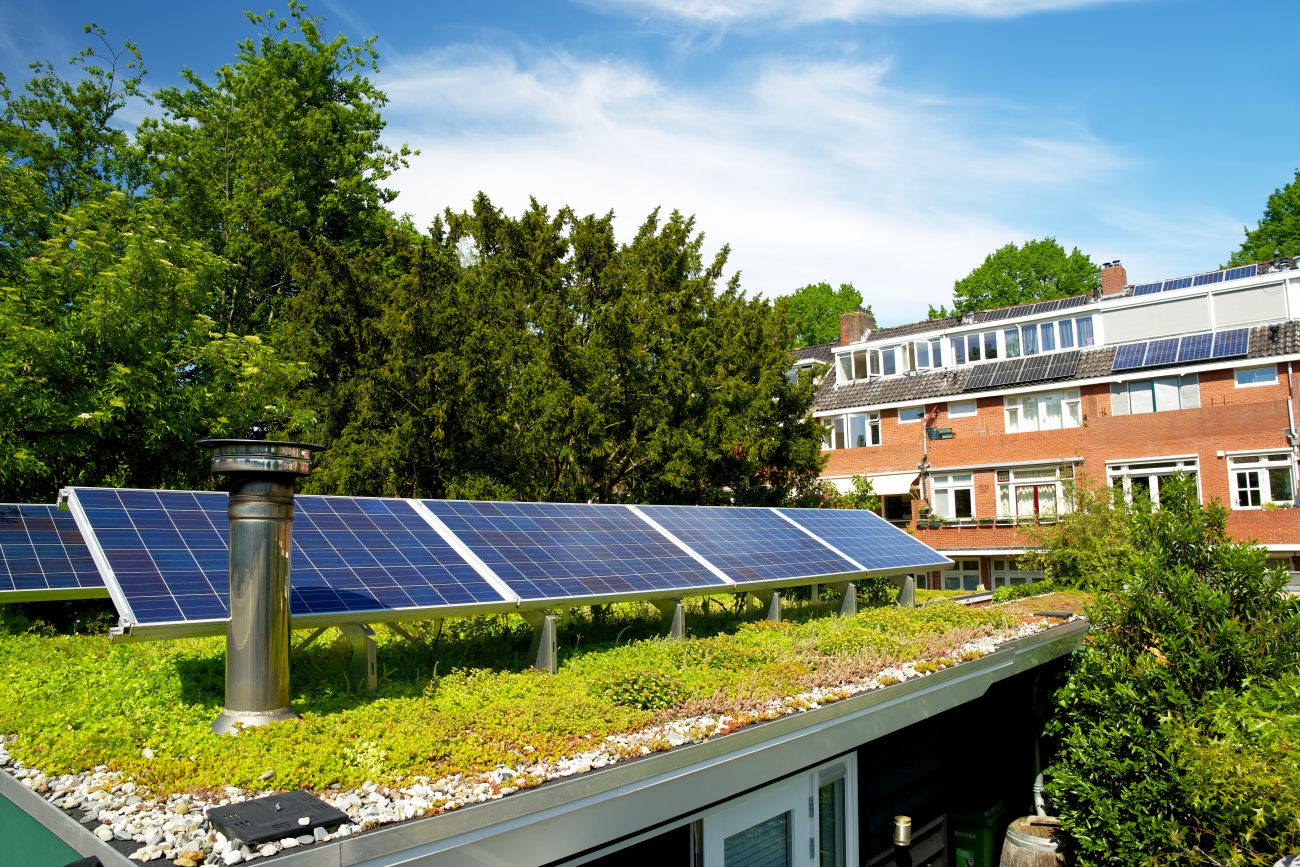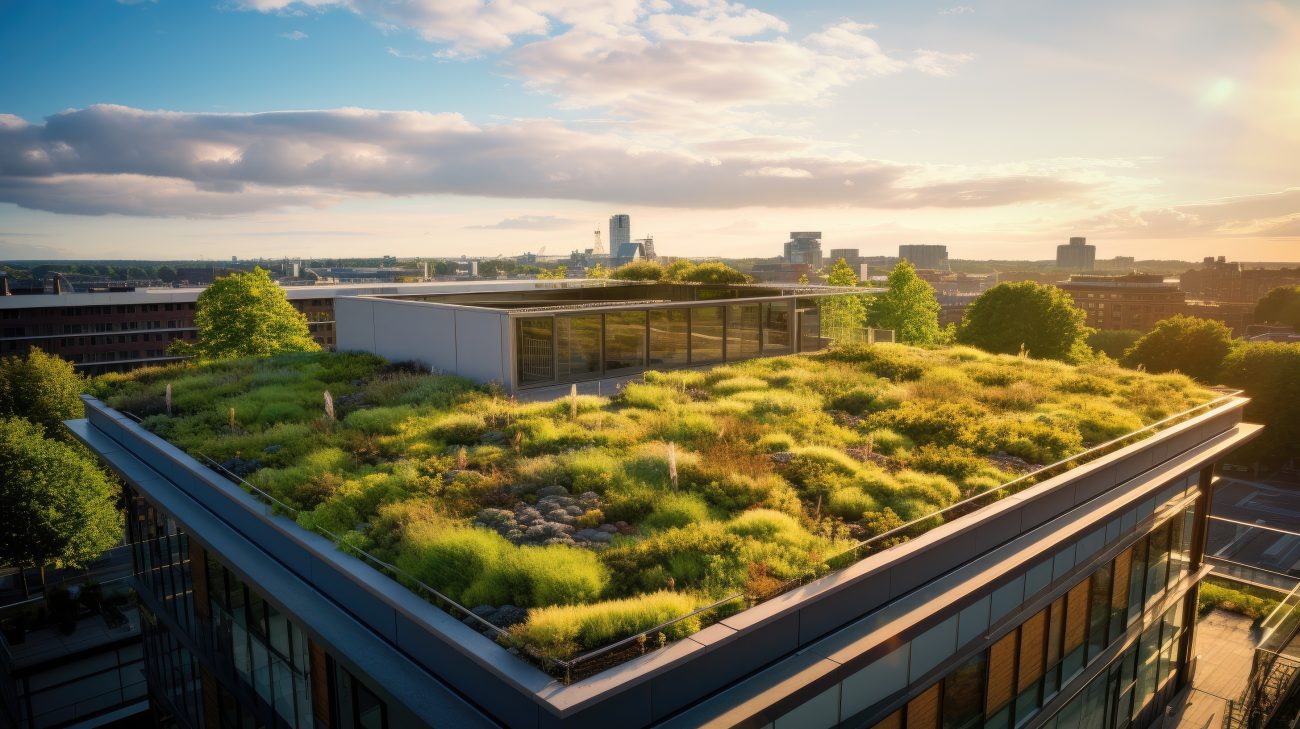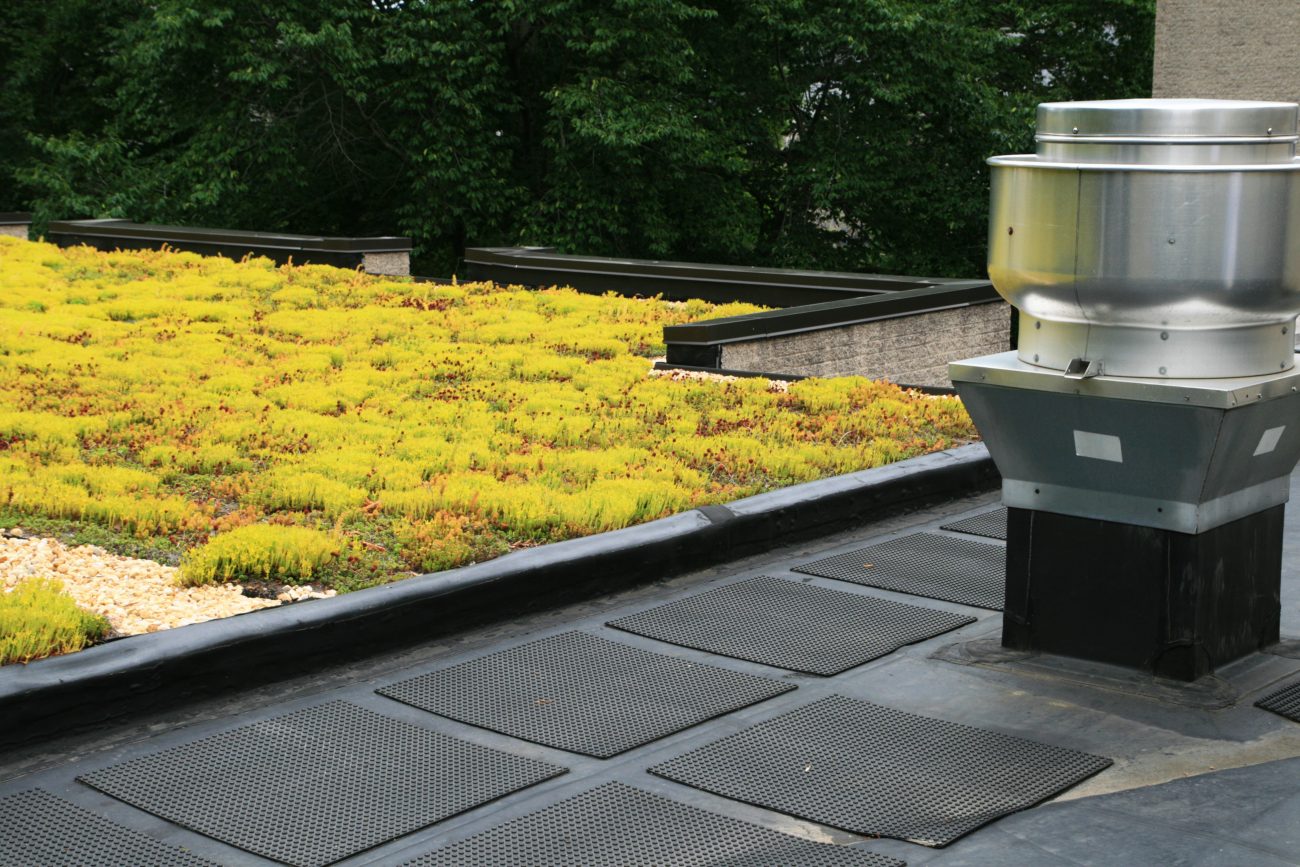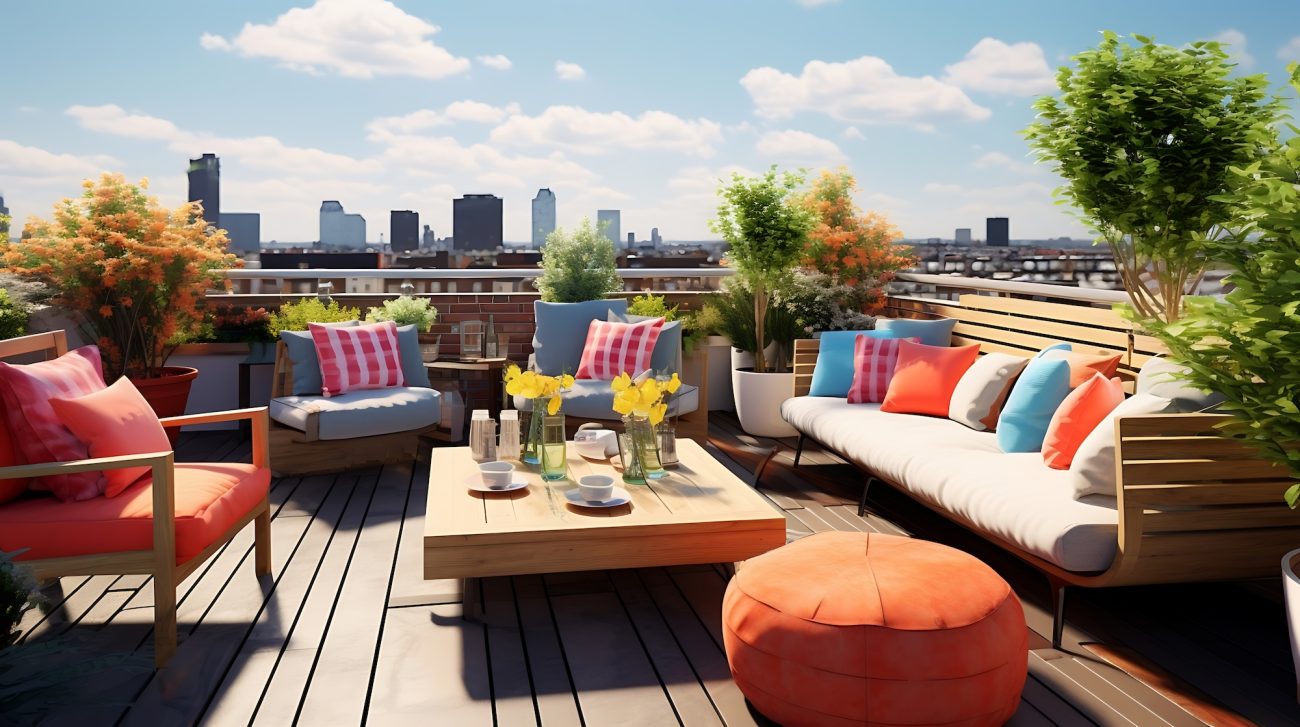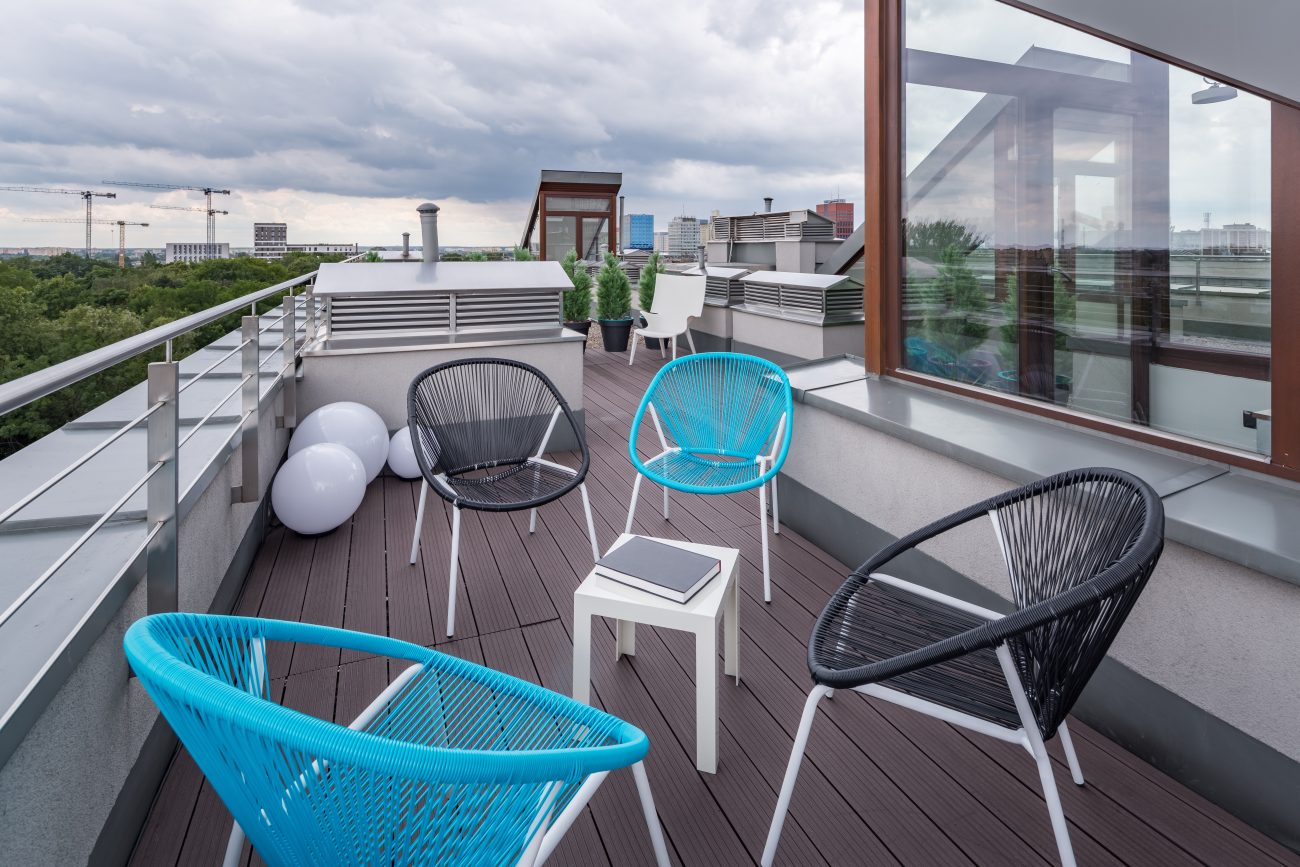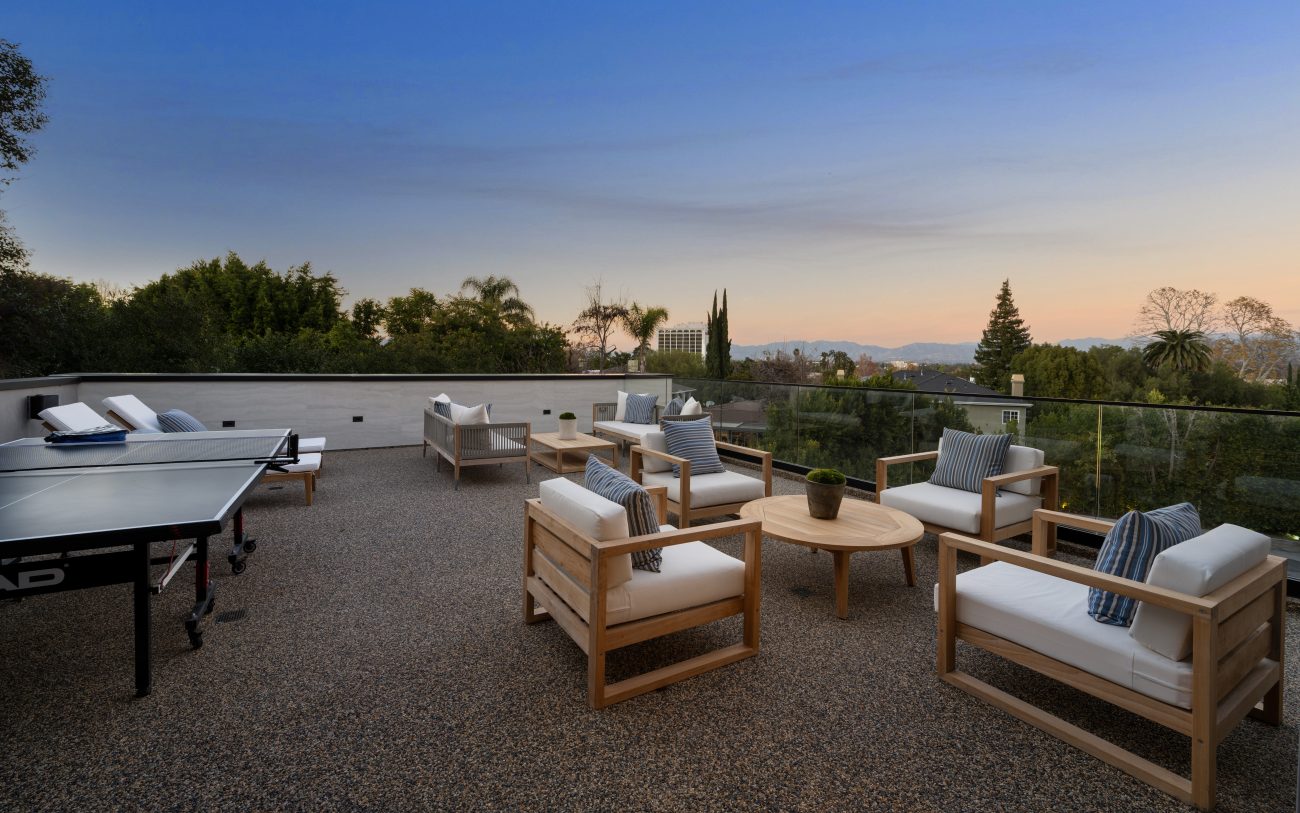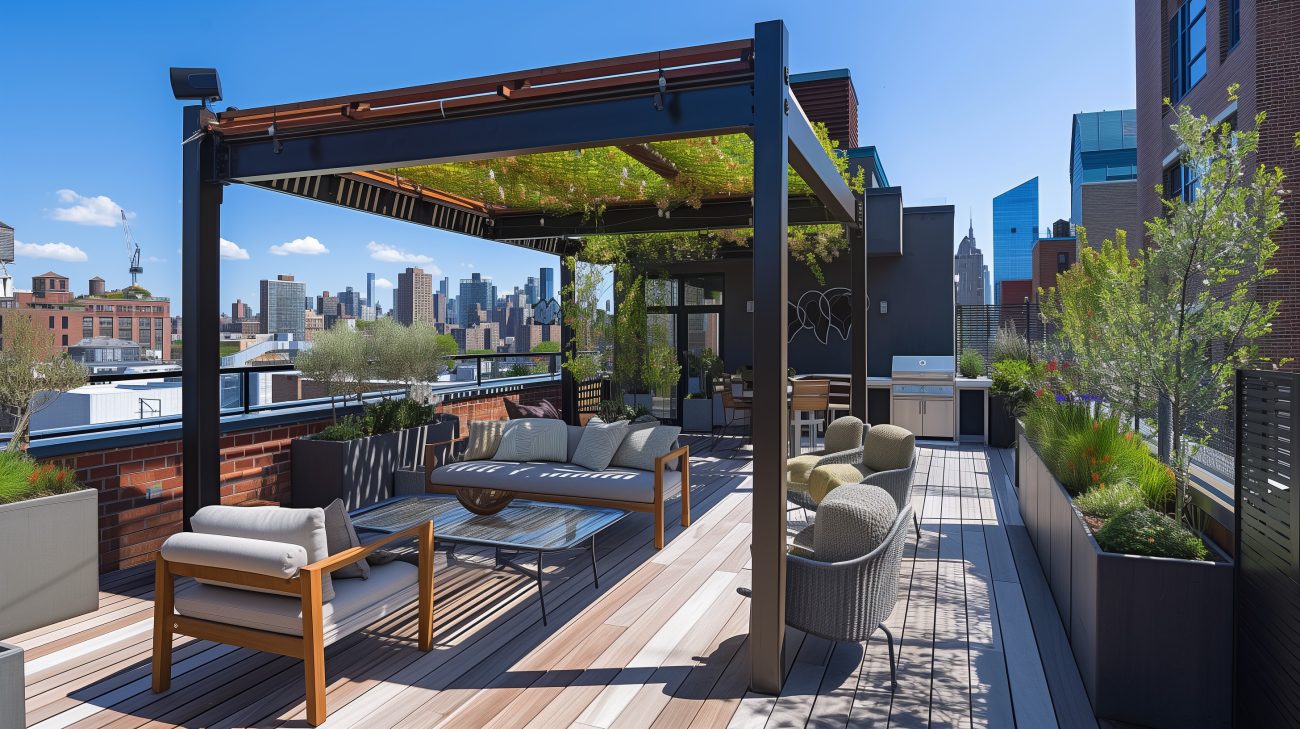
EPDM, TPO, elastomers, polyolefins… What do these acronyms and words even mean? And, more importantly, are they good options for your roof?
We decided to put together everything you need to know about flat roofs and you can always explore our article on all types of roofing if you want more details. That said, this information will help you make a sound decision for your residential or commercial roofing project. There isn’t a one-size-fits-all option out there, so you’ll need to look at the pros and cons of each flat roof material. Even if price is an important consideration, keep in mind that the least costly option might not necessarily be beneficial in the long run.
Elastomeric or modified bitumen membrane
Elastomeric membranes come in two varieties: traditional and self-adhesive. The former involves using a blowtorch to fuse a base elastomeric membrane to a finishing membrane composed of granules, while the latter uses cold-fusion technology (no blowtorch). Since traditional modified bitumen membranes require the use of a blowtorch, check that your contractor is covered for fire damage on their insurance. Moreover, some roofers may try to cut corners by not sealing joins (e.g., near skylights or vents). This can lower the material’s lifespan, so be sure to take the time to find a qualified roofing contractor for your project.
An elastomeric membrane can also be used for resurfacing, which allows you to lower waste and lessen your environmental impact. Resurfacing consists of heating up the old membrane, pushing in the leftover particles and installing a new membrane on top.
An elastomeric membrane should be your material of choice if you’re planning to build a rooftop terrace. It has all the characteristics needed and can be walked on without causing any damage. Its resistance also makes it the top roofing material choice for Canadian residents.
Pros of an elastomeric membrane:
- Requires little to no maintenance
- Resistant to wear and tear caused by branches or other debris
Cons of an elastomeric membrane:
- Slightly more costly than asphalt and gravel roofing

TPO
Thermoplastic Polyolefin (TPO) is a single-ply roofing membrane that’s applied using hot air welding. It doesn’t need much equipment to install, so many contractors offer it as an option. With that in mind, it’s important to take the time to hire a qualified roofer for your project poor installation can easily cause water infiltration.
TPO is the least polluting option of all the petrol-based roofing solutions. Plus, it’s entirely recyclable at the end of its lifetime. TPO is also more aesthetic than other solutions as it’s available in many colours, including white, which reduces the urban heat island effect. However, manufacturing TPO does require more energy.
Pros of TPO roofing:
- Highly resistant to UV rays, heat and extreme weather conditions
Cons of TPO roofing:
- Its surface can easily deteriorate
- Not as resistant to extreme cold as other solutions
- Its official lifespan is unknown (fairly new material)
- Easily damaged (perforated)

EPDM
EPDM stands for Ethylene Propylene Diene Monomer. It’s essentially a synthetic rubber! This flat roof material is as equally resistant to extreme colds as it is to strong UV rays. It’s also resistant to high humidity levels. Its characteristics are fairly similar to those of the TPO membrane. Though, besides being recyclable, it can be made of fully recycled materials, greatly reducing its environmental impact.
Pros of EPDM roofing:
- Entirely recyclable
- Highly resistant to UV rays
- Keeps its elasticity in extreme cold
Cons of EPDM roofing:
- Installation must be done elegantly
- Damages can be difficult to spot
- Easily damaged (perforated)
Tar and gravel
Tar and gravel roofing is a multi-layer roofing solution for your flat roof. It’s basically a sheet of felt that’s soaked in asphalt and it can help reduce the risk of water infiltration. This kind of roofing can be long-lasting but it’ll need to be maintained and inspected fairly regularly. For instance, it’s important to make sure that there’s gravel covering up the entire surface so that the felt sheet doesn’t dry out due to sun exposure. Many flat roofs in older Toronto districts use this roofing material. However, more and more people are opting for single-layer flat roof options and an increasing number of municipalities are banning the use of tar and gravel as a roofing solution. Be sure to consult your city rules and regulations.
It’s easy to tell when you need to get this roofing material replaced. You’ll notice craters starting to appear, dust accumulation and even exposed felt. When gravel begins to detach from the surface, a professional will need to coat the roof with a liquid solution and add more gravel.
Pros of tar and gravel roofing:
- Lower material cost compared to other roofing solutions
- Easy to repair
Cons of tar and gravel roofing:
- Maintenance is quite tedious
- Proper installation conditions aren’t available (need to consider the weather, the asphalt’s temperature, how thick it is, etc.)
- Limited expansion and contraction (elasticity) capabilities

Metal roof
Metal is one of the most durable and weather-resistant materials you can choose for your flat roof. From heavy rain and snow to harsh direct sunlight, metal roofs are designed to withstand a range of conditions. Additionally, this low-maintenance roofing option helps reflect sunlight and keeps your home or business cooler in the summer months, ultimately saving you money on the AC bill.
Beyond the practical benefits, metal roofing is also seen as a stylish and modern roofing material. Many home and business owners opt for metal roofs to increase their curb appeal.
Pros of metal roofing:
- Durable against harsh weather conditions
- Aesthetically appealing
- Energy-efficient
- Metal can be recycled
Cons of metal roofing:
- More expensive than membrane-style roofs
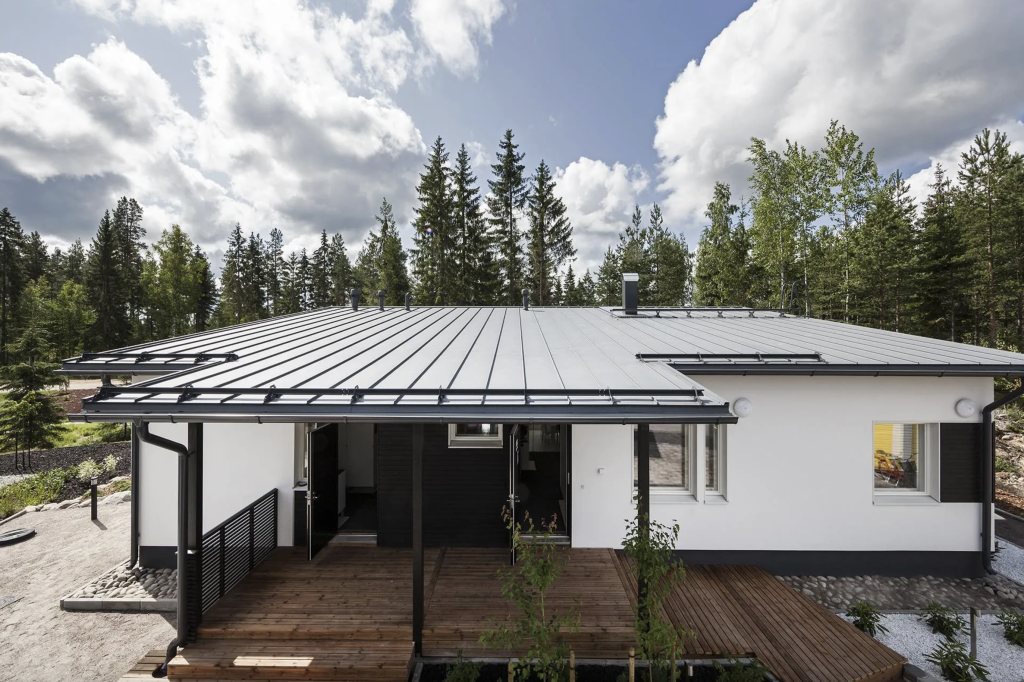
Built-up roof
Built-up roofing (BUR) is essentially an alternate term for tar and gravel roofing. The process consists of layering sheets of asphalt in between ply sheets. As such, built-up roofing systems come with the same pros and cons as the tar and gravel roofing listed above.
Best materials options for commercial flat roof
Finding the best materials for your commercial flat roof is important, especially if you want to keep your building in good working order. And while you might be tempted to opt for the cheapest possible option, be warned that using a less-than-ideal material will leave you with a cracked roof and a massive repair bill. So, which materials should you use? Let’s discuss.
- Metal roofing is reliable, durable, and long-lasting. Although it does come with a hefty up-front investment, metal is designed to withstand the test of time and is more likely to save you money on maintenance and repairs down the line.
- Blue roofs are a sustainable roofing option that you can think of as green roofing’s more affordable cousin. Ideal for commercial flat-roof buildings, blue roofs serve as a stormwater management system. The roof stores excess rainwater, dispersing it slowly to prevent flooding. The stored water also helps to keep your building cooler and can be reused for several things including watering a garden.
- Elastomeric membrane roofing is commonly used in commercial buildings and for good reason. The roofing system stands up well to general wear and tear and requires little to no maintenance, leaving you more time to focus on the success of your commercial business.
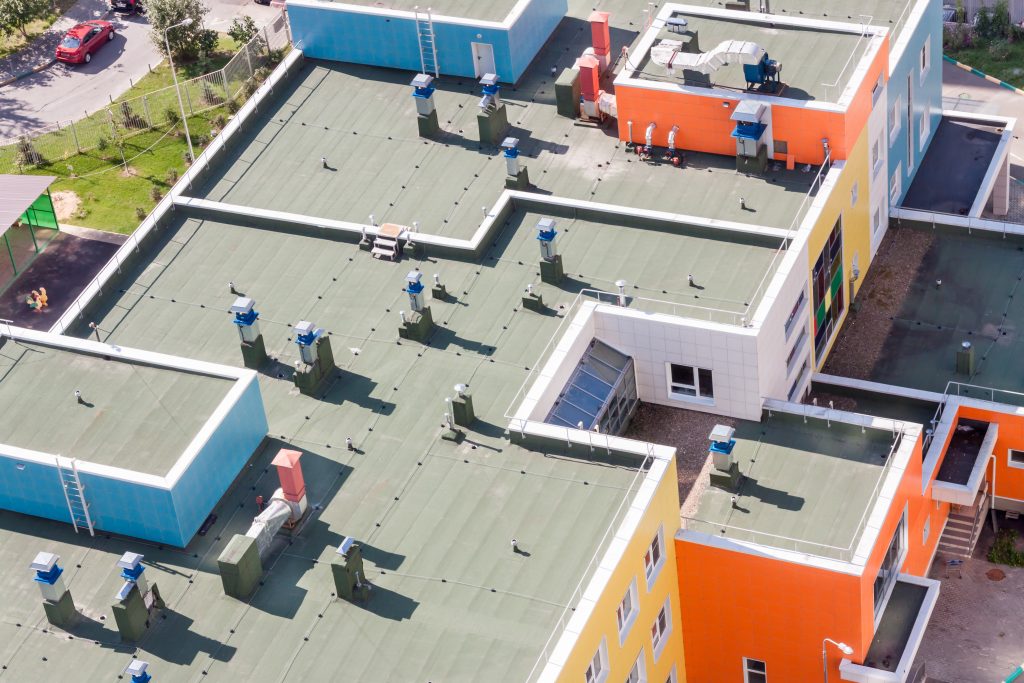
The most popular choices for a residential flat roof
Residential flat roofs aren’t a common occurrence in Canada. This is largely due to the weather conditions we see here. Flat roofs simply aren’t designed to handle excessive build-up of snow or rain. But that doesn’t mean they don’t exist. So, if you’re considering redoing your flat roof, here are some of the best materials to use for residential buildings.
- Blue roofs are an easy way to combat rainwater build-up on your flat roof home.
- Metal roofs are ideal for their durability, wide range of colour options and overall aesthetic appeal.
- Ethylene Propylene Diene Monomer (EPDM) is a solid option for residential buildings in Canada because of its resistance to both extreme cold and extreme heat.
Why not get a green roof?
Two kinds of green roofs exist: extensive roofs (without cultivation) and intensive roofs (with cultivation crops). In both cases, you’ll need a drainage system. Extensive roofs are much easier to install as they simply require a thin layer of loam (fertile soil), making the workload lighter. Intensive roofs, on the other hand, need at least 6 inches of soil, making it a lot heavier for contractors. Also, costs associated with intensive roofs are higher as the roof needs to be easy to access, requiring more work to be done (e.g., installing a stairwell, door). You’ll also need a structural engineer to assess and, if necessary, help reinforce your building’s structure to support it.

Although the initial cost of a green roof might be quite high, it’ll be well worth it. You’ll save on heating and cooling costs thanks to the insulation effect created by the soil on the roof. The overall air quality will be improved, too, since the CO2 you exhale will be absorbed by the plants. The best part? Your roofing material is protected by the loam, doubling its lifespan!
What about a rooftop terrace?
Putting in a rooftop terrace is also an interesting option, especially if you already put in a green roof. Rooftop terraces are popular in more urban settings where open land is limited or nonexistent. You can put in a patio set, a pergola, little passageways through your crops, etc. The possibilities are practically endless! Just be sure you hire highly qualified contractors to ensure everything is properly installed and fixed into the structure. Of course, you’ll need to make sure there’s a drainage system in place.
White roofs: What are they all about?
White roofs are used to offset the urban heat island effect. However, there’s some debate regarding their efficiency. Since white roofs don’t attract the sun’s rays, you’ll likely have higher energy bills in colder months. Another inconvenience would be that, in no time, your white roof is likely to turn grey, losing between 30% and 60% of its sun-reflecting capabilities.
Is covering existing roofing with another material feasible?
Tar and gravel roofing can be covered up with different kinds of flat roof material. The gravel must first be removed and then MDF sheets need to be installed before covering the surface with the new material. However, doing so isn’t recommended as the humidity stays trapped between the layers and can cause damage.
How much does it cost to replace a flat roof?
Below is a table with the average costs to replace a flat roof in both Greater Montreal and the Greater Toronto Area, along with each roofing material’s typical lifespan.
| Roof Type | Average cost – Montreal |
Average cost –Toronto (GTA) |
Lifespan |
| Elastomeric membrane | $19 – $23/sq. ft. | $23 – $30/sq. ft. | 20 to 30 years |
| TPO/EPDM | $11 – $14.50/sq. ft. | $13 – $18/sq. ft. | 25 to 30 years |
| Tar and gravel | $11.35 – $12.60/sq. ft. | $12.55 – $13.85/sq. ft. | 15 to 30 years |
| Metal |
$20.50 – $36/sq. ft. |
$25 – $43/sq. ft | 50+ years |
| Built-up roof (BUR) | $6 – $10/sq. ft. | $7.20 – $10/sq. ft | 15 to 30 years |
Replacing a flat roof on a residential building usually averages between $14,500 and $24,000, whereas replacing a flat roof on a commercial building can easily run upward of $120,000 depending on the surface area. Take a look at our article on roofing costs for more details.
What is the best material for a flat roof?
All flat roofing materials come with their own set of pros and cons. At the end of the day, the material you choose is a matter of personal preference. However, if you’re looking for the best flat roofing materials consider the following:
Best value for money Elastomeric membrane
Most eco-friendly EPDM as it is entirely recyclable
The coolest A green roof with a terrace
Why you need a qualified roofer for your flat roof
While picking a roofing material is important, you’ll need a reputable contractor to ensure that it’s installed correctly. Avoid water infiltration, installation errors and other issues by working with our Renovation Advisors. They’ll get you up to three quotes from Verified Contractors at no cost or obligation! If you’re ready to get started, call us or fill out our form.
Happy renovations start here!
Also read

Best time to replace a roof

Creating a Sustainable Future with Green Roof Systems

Should I Renovate Right Now? Thoughts From Canadian Homeowners

Navigating Condos: Private, Common, and Exclusive Use Areas

Everything About Roofing

Cost of Home Adaptations for Reduced Mobility

How much does an HVAC system cost in 2024?

Basement Rental Tax Deductions: How to Save While Avoiding an Audit

9 Tips to Prepare for a Major Renovation

Top 11 Basement Renovation Ideas
